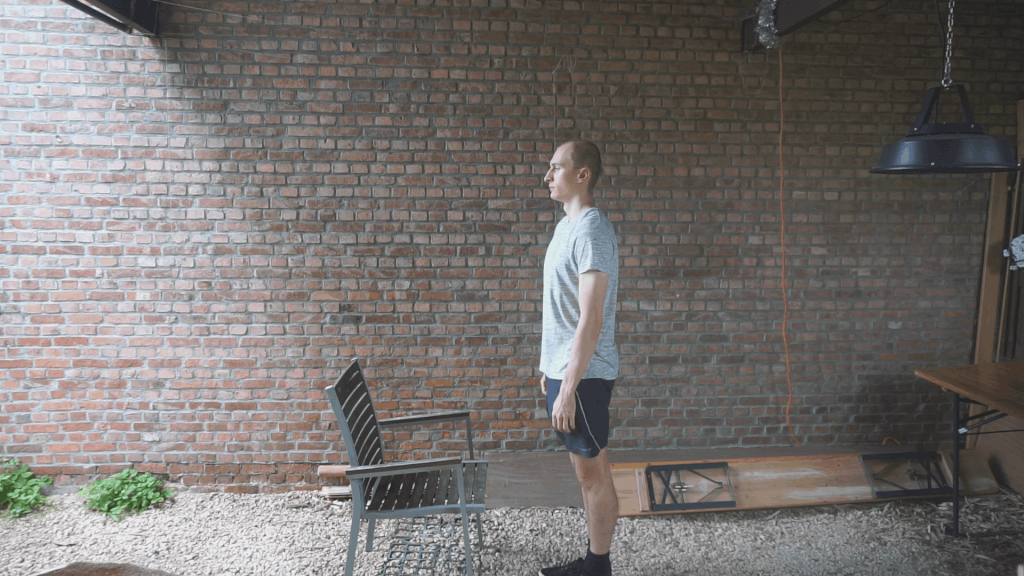Mountain climbers are an exercise that can offer many benefits but you may want other options. What are some alternatives to mountain climbers with similar benefits?
Mountain climbers are a well-known exercise where you raise your knees alternately while in a plank position. Among other benefits, mountain climbers can strengthen your leg and core muscles, they are a no-equipment exercise you can do at home, low-impact, improve balance, etc.
Whether you don’t enjoy mountain climbers, you want a more wrist, hip, or back-friendly alternative, or you want an alternative for any other reason, these alternatives to mountain climbers can help you with some or all of these aspects.
Keep in mind that implementing these alternatives can offer benefits but like any exercise, there is always some risk of injury. Implement a good technique to keep your injury risk low. When in doubt talk to an expert.
1. High knees
The number one alternative to mountain climbers is high knees. In this exercise, you basically run in place while lifting your knees high with each step. They are very similar to mountain climbers except that you are standing up instead of in a plank position.
High knees are an especially great alternative to mountain climbers if you have wrist issues. They help you burn calories, engage your leg muscles, don’t require any equipment, improve coordination and balance, etc. without putting pressure on your wrists.
There are however also some key differences between mountain climbers and high knees. High knees engage your core and arm muscles a lot less. In turn, they do put more weight on your legs which can be helpful for building more leg muscle and training your cardiovascular endurance more.
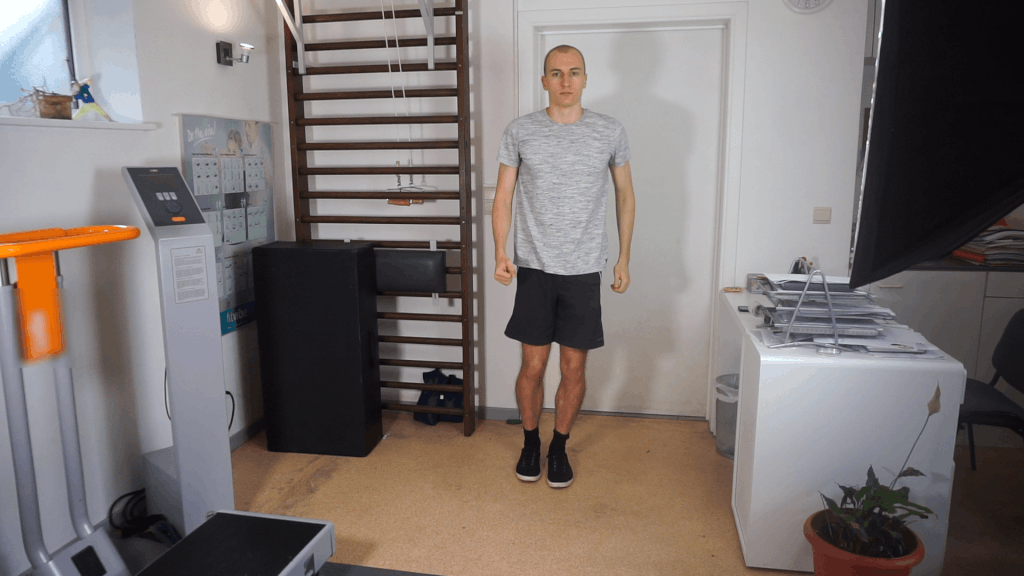
2. Plank jacks
Planks are a very popular no-equipment bodyweight exercise. By making this exercise a bit more dynamic and changing your hand grip you get plank jacks. To do plank jacks take the following steps:
- Start with your face facing the floor on your hands and knees.
- Move your feet back until your body is in a straight line. This means that your knees will be off the ground and that you are resting on your hands and feet.
- Make a little outward jump with your feet.
- Jump back in the position of step 2.
- Keep jumping in and out for a certain amount of repetitions or time.
Plank jacks can be a more knee and hip-friendly alternative to mountain climbers. At the same time, they still engage your core muscles and get your heart beating.
One downside is that plank jacks require stronger core muscles. If you are not able to control your back movements while doing plank jacks they may become suboptimal for your lower back.
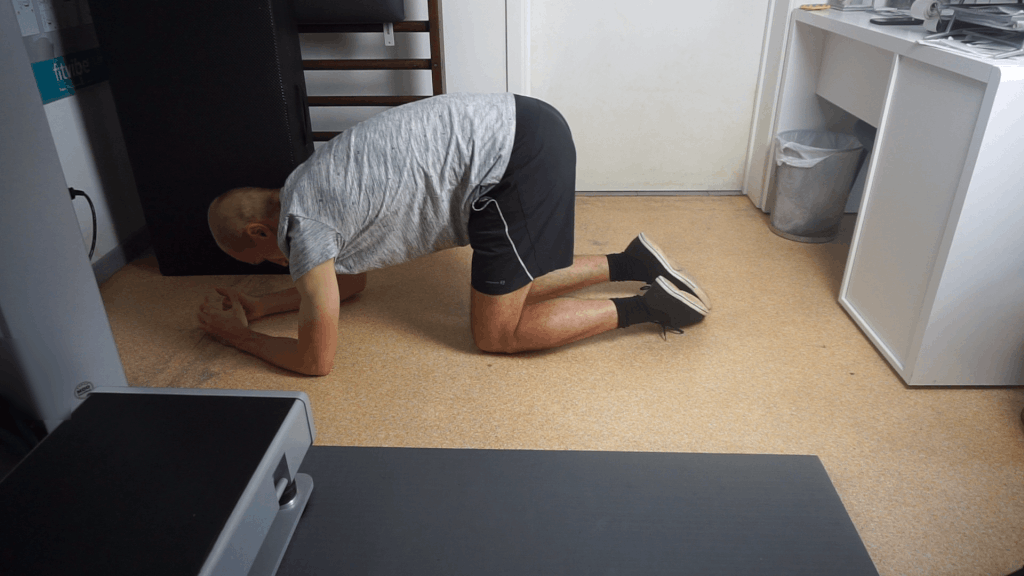
3. Lunges
To do two walking lunges take the following steps:
- Stand up straight with your feet at more or less shoulder width.
- Take a big step forward so that you get into a position where both of your knees are at a 90-degree angle. Your front foot should be flat on the ground, your back foot should only touch the ground with the ball of the foot (front).
- Move your back foot forward and get into the same position of step 2 but with your other foot in the front.
Walking lunges are a great no-equipment, at-home resistance training exercise to strengthen your leg muscles. They will be more effective than mountain climbers for building leg muscles in a short amount of time.
In turn, lunges engage your cardiovascular system and core muscles less. If this is important to you, you can combine lunges with core and cardiovascular endurance exercises.
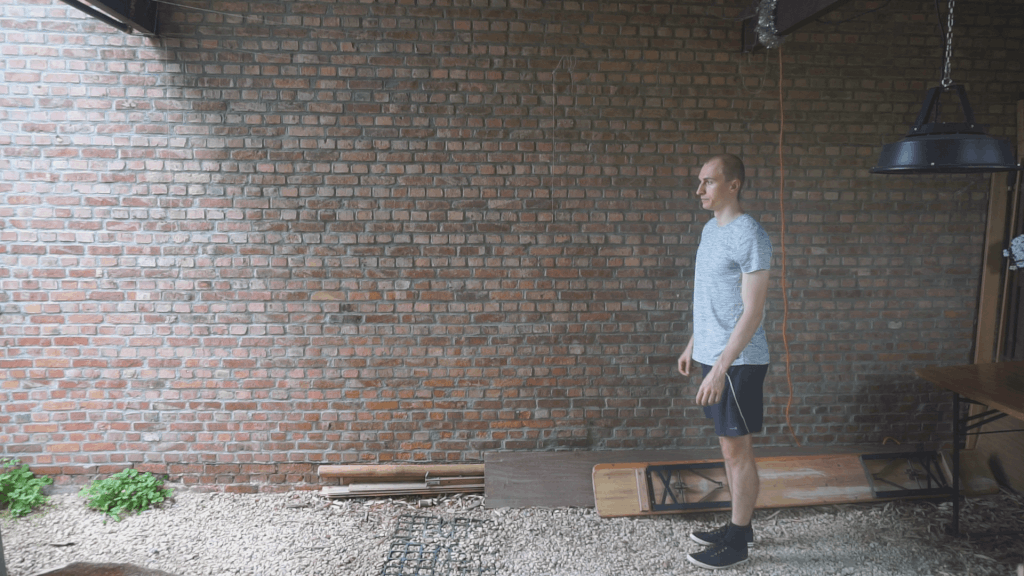
4. Running
Running is one of the most popular aerobic exercises out there. It is also just an aspect of many sports. Similar to mountain climbers you don’t need that much equipment for running. You can also often start running as soon as you step out of the door.
Running is mainly a potential alternative to mountain climbers because of the cardio training you get while still engaging your leg muscles.
Some downsides of running as a replacement for mountain climbers is that it is harder to do at home and does require an investment in running shoes. In areas like a busy city, going for a run is not always as easy as stepping outside the door. You are also more dependent on the weather for your workout.
Lastly running does not engage core muscles as much as mountain climbers.
5. Burpees
Burpees are a combination of a squat, pushup, and a little jump into one exercise. In short, burpees offer very similar benefits to mountain climbers but they also engage your upper body a lot more.
The potential advantages of burpees are at the same time its potential disadvantages. Your leg muscles and joints will experience more pressure, your upper body will have a harder time, and your heart will have to beat faster to fuel the movements.
If you can handle these rougher movements, this can lead to faster fitness improvement. If not, burpees will make it easier to injure yourself compared to mountain climbers.
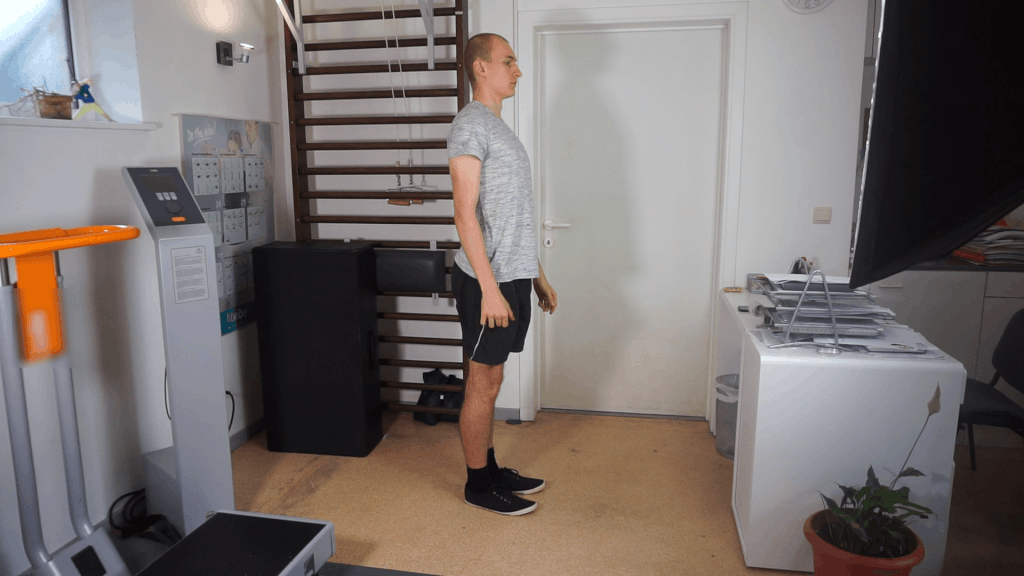
6. Crunches
Crunches are one of the most popular ab exercises out there and for a good reason. To do a crunch take the following steps.
- You start lying down on your back with your legs bent at the knees and your feet flat on the ground.
- You can place your hands behind your head, cross them over your chest, or put them anywhere else. The point is to not really use your arms or move them during the exercise.
- Raise your head and shoulders from the ground as much as possible while keeping your lower back on the floor. Make sure you don’t use your arms but your ab muscles to do this movement.
- Lower your head and shoulders until you are back in the starting position.
Crunches are a more dynamic and lower-back friendlier way to engage your core muscles compared to mountain climbers. They are also generally easier to do with the proper form.
Some ways crunches are different from mountain climbers is that they do not burn as many calories, engage fewer core muscles, do not improve balance, and don’t engage your leg muscles.
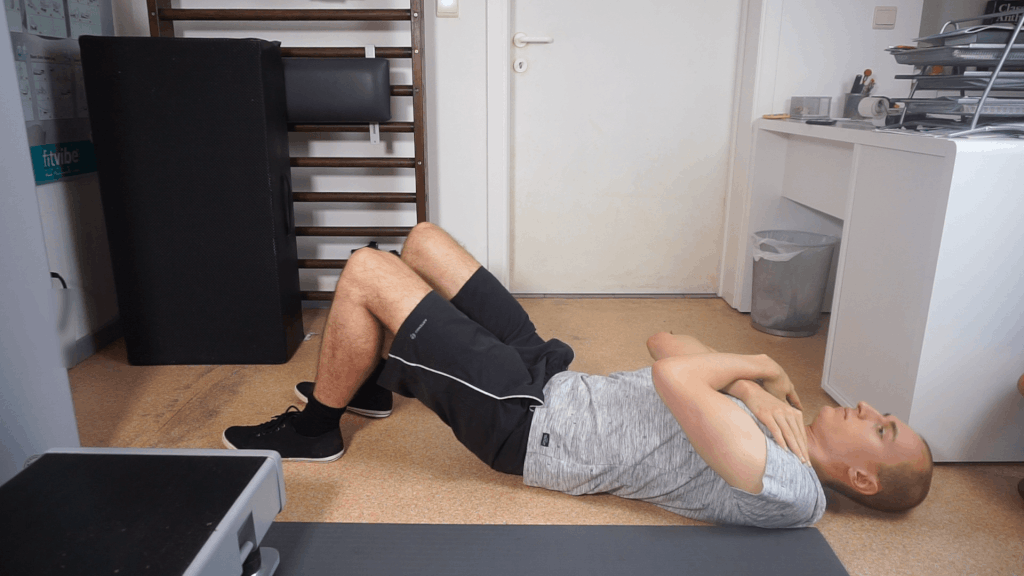
7. Step-ups
For step-ups you need a stable object or platform strong enough to stand on. A sturdy plyo box may be a good option depending on how much pressure you want to put on it. Something like a concrete platform works too.
Once you have a suitable object or platform, to do two step-ups take the following steps:
- Stand upright in front of the object facing toward it with your feet at shoulder-width.
- Raise one foot and put it on the surface of the object. Make sure your sole is entirely on the surface.
- Raise your body by exerting pressure with the leg of the foot that is on the object.
- Put your second foot next to the other one.
- Step down with the first foot.
- Step down with the second foot.
- Do a repetition with the other foot first.
Step-ups are more effective than mountain climbers for training your leg muscles. At the same time, your leg muscles will likely fatigue faster than your cardiovascular system when doing step-ups.
This means that if you want to train your cardio you will need other exercises as well.
